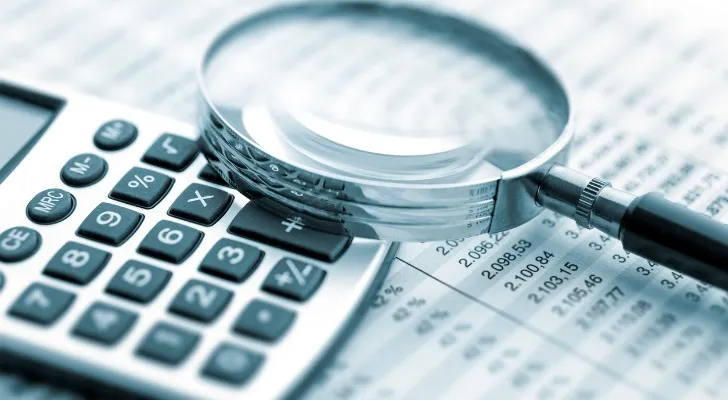A pension is a type of retirement plan where employers promise to pay a defined benefit to employees for life after they retire. It’s different from a defined contribution plan, like a 401(k), where employees contribute their own money in an employer-sponsored investment program. Pensions grew in popularity during World War II and became mainstays in benefit packages for government and unionized workers. While they remain common in the public sector, they’ve largely been supplanted by defined contribution plans in the private sector.
A financial advisor can help you create a financial plan for retirement and other long-term goals. Speak with an advisor who serves your area today.
What Is a Pension Plan?
An employer who offers a pension plan sets aside money for each employee, which then grows over time. When that employee retires, the proceeds in the pension plan cover the income the company promised to pay them in retirement. Often, the employee has the choice of taking either a lump sum upon retirement (or when leaving the company) or regular payments for life through an annuity. Depending on the specifics of the plan, pension benefits may be inherited by a surviving spouse or children.
Your pension income is usually paid out as a percentage of your salary during your working years. That percentage depends on the terms set by your employer and your time with the employer. A worker with decades of company or government tenure may get 85% of their salary in retirement, for instance. Meanwhile, one with less time under their belt, or at a less generous employer, may only receive 50%.
Employees with pensions don’t participate in the management of those funds. This is considered a plus since most people aren’t financial experts. But on the flip side, the lack of control means employees are powerless to ensure that their pension funds have adequate financing. They also must trust their company to stay in business during their lifetime. If the company goes bankrupt, the pension may terminate., though if your plan is covered by the Pension Benefit Guaranty Corporation, it will kick in to cover all or most of it.
With a pension plan, if you leave your employer before your pension benefits vest, you forfeit the money that your company put aside for your retirement. Vesting schedules come in two forms: cliff and graded. With cliff vesting, you have no claim to any company contributions until a certain period has passed. With graded vesting, a certain percentage of your benefits vest each year, until you reach 100% vesting.
Public Pensions vs. Private Pensions
As you probably guessed, the main difference between a public pension and a private pension is the employer providing it. Public pensions are available from federal, state and local government bodies. Police officers and firefighters likely have public pensions, for instance, as do school teachers.
While less common nowadays, some private companies still offer pensions. More often than not, they are long-running companies that started offering pensions last century. Many, though, have frozen their pensions so that new employees are not eligible to receive them.
Compared to public pension funds, private pensions have more legal protections. By law, private companies must make sure their pension funds have adequate funding. Also, they must ensure their pensions by paying premiums to the Pension Benefit Guaranty Corporation.
Public pensions aren’t subject to the same requirements. Because of this lack of legal protection, many state pension funds are seriously underfunded, which could result in a drastic reduction of benefits if nothing changes.
What’s the Difference Between a Pension and a 401(k)?
In the private sector, the 401(k) plan has largely replaced the traditional pension. A 401(k) is a defined contribution plan, where money is withheld from your paycheck and put into an investment account in your name. You may make money on your investments, or you may lose it, but either way, the money belongs to you.
By contrast, a defined benefit plan generally pools money in the company’s pension fund. Your employer is obligated to pay you according to the terms of its pension plan, but no part of the pension fund is actually in your name.
Traditional 401(k) plans are tax-advantaged. This means you don’t pay taxes on your contributions or earnings until you retire and make withdrawals. Similarly, you don’t pay taxes on pension payments until you receive them. But, if you take a lump sum when leaving a company before retiring, you’ll have to roll it over into a tax-advantaged account (like an individual retirement account (IRA)) to avoid taxes.
Also, some 401(k) plans have employer matches. If your employer offers one, this means it will match your contributions up to a set limit. Pensions, on the other hand, do not have employer matches, since all of the money in the fund comes from the employer.
Comparing 401(k) and Pension Plans
| 401(k) | Pension |
|---|---|
| The retirement benefit is not guaranteed | The retirement benefit is guaranteed |
| An employee contributes part of their salary to plan | Employer mostly funds the plan |
| An employee typically chooses the type of investments to contribute to | The employee normally has no control over the type of plan |
| May include an employer match (up to a certain percentage) | Employees may choose to contribute to the plan |
Pensions and Social Security

People who have pensions from a government employer may not be eligible to receive Social Security benefits, or they may receive only partial benefits. This is because some public-sector workers who have pensions aren’t subject to Social Security payroll taxes. Because they don’t pay into the fund, they don’t receive full benefits.
If you worked part of your career in the private sector but also spent time working a public-sector job with a pension, you may have previously contended with the Social Security Windfall Elimination Provision (WEP). The WEP limited Social Security retirement benefits for people who also have pension income coming their way. There was also the Government Pension Offset (GPO), which limited the spousal or survivor benefits available to people who have government pension income.
However, both provisions were repealed as part of the Social Security Fairness Act signed by President Joe Biden in January 2025. The elimination of these provisions mean 3.2 million people will receive higher monthly benefits, as well as one-time payments retroactive to January 2024.
The purpose of the WEP and GPO was to make Social Security benefits apply more fairly across the board. In turn, the years you spent working a public sector job previously counted for nothing, as if you were unemployed. And since Social Security bases benefits on a person’s 35 years of highest-earning work, public workers received either limited benefits or none at all.
What Are the Risks of a Pension Plan?
Although having access to a pension has many benefits, no retirement plan is without risks. For one, unlike with a 401(k) plan or IRA, you have no say in how your company invests the money in your pension fund. If the manager of the fund makes bad investment decisions, that could result in insufficient funds for the overall pension. This would presumably lead to a reduction of your benefits without warning.
Another risk of not being in control is that your company could change the terms of your pension plan. In particular, it could decrease the percentage of salary contributed for each recipient, which will result in a lowered benefit amount. Seeing as pensions are much more expensive for employers than most alternatives, it’s in your employer’s interest to minimize costs.
In the case of public pensions, there’s also the risk that the state or municipality will encounter economic issues and declare bankruptcy, which could result in a reduction of benefits for pension plan participants. For these reasons, it’s best to save for retirement on your own as a supplement to your pension. You don’t want to count on having a comfortable pension and then end up unexpectedly short on funds.
How Pension Plans Compare to Other Retirement Options
Pension plans provide a defined benefit that pays income for life, which distinguishes them from most other retirement options. This structure offers predictability, since the benefit is based on a formula tied to salary and years of service rather than market performance. For workers who value stable, ongoing income in retirement, pensions function more like a paycheck replacement than an investment account.
Defined contribution plans such as 401(k)s offer a different advantage: flexibility and individual ownership. Participants control their contributions and investment choices, and account balances can be used for a range of retirement needs. While income is not guaranteed, these plans allow savers to tailor their risk exposure and withdrawal strategies to their personal circumstances.
IRAs add another layer of benefit by expanding access to tax-advantaged savings outside of employer plans. IRAs can supplement pensions or 401(k)s and provide additional options for tax management, particularly when combining traditional and Roth accounts. This flexibility can help retirees manage income and taxes over time.
Another option, annuities share some similarities with pensions by offering income streams, often for life, but they are purchased individually rather than provided by an employer. This allows retirees without pensions to create predictable income while still maintaining control over timing and structure.
Together, these retirement options highlight how pensions emphasize security, while other vehicles prioritize flexibility and personal control.
Bottom Line

In today’s retirement landscape, where defined contribution plans reign, it’s easy to feel nostalgic for pensions. Wouldn’t it be nice to have a guaranteed income stream for life? But pensions have risks. The biggest one for private sector workers is that their company and pension will close. Federally insured payments would kick in if that occurred, but if the pension has inadequate funding, employees may receive less than they were counting on.
Tips for Preparing for Retirement
- Don’t be afraid to get professional help from someone like a financial advisor when it comes to your retirement plans. Finding a financial advisor doesn’t have to be hard. SmartAsset’s free tool matches you with vetted financial advisors who serve your area, and you can have a free introductory call with your advisor matches to decide which one you feel is right for you. If you’re ready to find an advisor who can help you achieve your financial goals, get started now.
- Try to max out on your company’s 401(k) match. The match is free money. It’s an easy way to increase your nest egg. To figure out how big that nest egg needs to be, use SmartAsset’s retirement calculator, which takes even local taxes into account.
Photo credit: ©iStock.com/Milko©iStock.com/Ridofranz, ©iStock.com/deepblue4you
